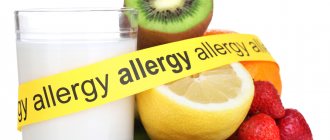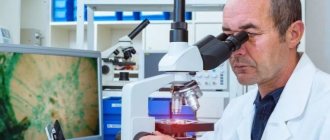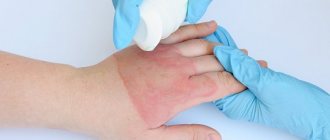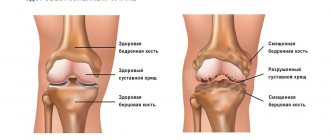August 16, 2020
Dermatitis is an inflammation of the skin that can occur due to a variety of irritants: allergens, aggressive chemicals, fungi, and adverse weather factors. Chronic inflammation of the skin also occurs with psoriasis, but in this case the condition is distinguished as a separate disease, and dermatitis is a collective concept, a syndrome that may not relate to any specific disease, occurring periodically.
Professions - risk groups
This disease mainly affects medical workers, mechanics, builders, hairdressers, cosmetologists, makeup artists, cleaners, gardeners, agricultural workers, as well as people who work with food (waiters, cooks, etc.).
- The most common irritating agents are solvents, bleaches, medical alcohol, soaps, deodorants, cosmetics, sawdust, oils, and detergents.
- If you have to wash your hands regularly or the work itself involves the fact that they are often in a humid environment, then this is also a risk factor for the development of contact dermatitis.
- Allergic contact dermatitis can be caused by metals, formaldehyde (found in glue, solvents), plants, cosmetics, etc.
Pathogenesis
The pathogenesis of dermatoses varies extremely depending on the group of dermatoses and nosological forms, and it is not possible to describe them within the scope of the article. It should only be pointed out that a significant role in the development of dermatoses is played by an allergic reaction of immediate/delayed type, autoimmune disorders, toxic damage to the skin, violation of the integrity of the skin, infection of the skin/metastasis of an infectious agent into it, degenerative changes in collagen/elastic fibers of the skin, neurogenic mechanisms, etc. .
Manifestations and types of contact dermatitis
For irritant contact dermatitis to occur, a single exposure to the agent may be sufficient. Then the disease is called acute , redness of the skin occurs, often swelling, blisters, and the affected area becomes moist. All this is accompanied by burning, pain and often itching.
Chronic is more common - when there is prolonged contact with a substance that has a mild irritant effect. Then the skin becomes dry, red, flaky, thicker and cracks.
With irritant contact dermatitis, problems most often occur on the back of the hand and the skin between the fingers. But sometimes even areas covered by clothing, such as the genitals, are affected.
With allergic contact dermatitis, the boundaries of redness can be blurred, several areas are affected at once: eyelids, lips, etc. Pain and burning occur infrequently, but there is almost always itching. Visually, allergic and irritant contact dermatitis are quite similar.
If you suspect contact dermatitis, your doctor will first ask you about the specifics of your work (especially if you are undergoing a medical examination), as well as when your symptoms began and what you attribute to their worsening. Therefore, it is better to prepare and try to answer these questions for yourself before visiting the doctor. The doctor will also be interested in whether you have already had dermatitis and allergic diseases.
Diet
Hypoallergenic diet
- Efficacy: therapeutic effect after 21-40 days
- Timing: constantly
- Cost of products: 1300-1400 rubles. in Week
Diet for skin diseases
- Efficacy: therapeutic effect after a month
- Time frame: three months or more
- Cost of products: 1400-1500 rubles per week
Diet for dermatitis
- Efficacy: Therapeutic effect after 3 weeks
- Timing: Constantly
- Cost of products: 1300-1390 rubles per week
Diet for psoriasis
- Efficacy: healing effect
- Timing: constantly
- Cost of products: 980-1150 rubles per week
In the complex therapy of dermatoses, rational dietary nutrition is the most important method of treatment. This primarily applies to allergic/pruritic dermatoses, but is also important for dermatoses of other groups. For this purpose, Diet for Dermatitis , Hypoallergenic Diet , Diet for Skin Diseases , Diet for Psoriasis , and so on may be prescribed.
Since almost any dermatosis has an allergic component, it is recommended to exclude from the diet foods that have a high sensitizing activity, contain histamine or contribute to its production (chocolate, cow's milk, strawberries, coffee, cocoa, orange juice, hard cheeses, smoked meats, tomatoes, hazelnuts , tuna, herring) and artificial food additives.
In case of atopic / seborrheic dermatitis, all easily digestible carbohydrates (jam, sugar, sweet pastries, preserves, confectionery, condensed milk, sweets, honey) are subject to restriction. Also excluded are smoked meats, sausages, seafood, rich broths, red meat, marinades/sauces, canned fish/meat, seasonings (mustard, horseradish, vinegar, ketchup, mayonnaise), pickled vegetables, mushrooms, spicy dishes, salt, sauces, animal fats. , sweet drinks and alcoholic drinks.
For a number of dermatoses, it is necessary to exclude specific groups/types of foods from the diet, for example, for bullous dermatoses ( Dühring's dermatitis herpetiformis ) - exclusion of foods containing glutin and iodine. A particularly strict diet should be followed for chronic recurrent dermatoses during exacerbation.
How is the diagnosis made?
To rule out or confirm allergic contact dermatitis, your doctor will perform a skin test. It consists of applying samples of common common allergens and those found in your workplace to the skin. If redness and inflammation occur, then there is an allergy to the applied substance.
In rare cases, a biopsy (analysis of a tissue sample) of the skin is required to rule out other diseases (psoriasis or other inflammatory dermatoses).
If the diagnosis of irritant contact dermatitis is confirmed, then treatment will have three directions:
- Avoid exposure to irritant.
- Restore damaged skin.
- Relieve inflammation.
If contact with an irritating substance cannot be excluded, then you can wear a respirator, goggles, overalls or, for example, latex gloves with an inner cotton layer. This is necessary so that sweat is absorbed by the fabric and does not harm the skin.
Diagnostics
To establish a diagnosis, special application tests (patch tests) are used, which involve applying the allergen to a particular area of the skin. At the same time, during the diagnostic examination, a clinical and biochemical analysis of blood and urine is prescribed. If there are indications, a blood test is performed for hormones, a coprogram, tests for dysbacteriosis are taken, and an ultrasound examination of the abdominal organs is performed (in order not to miss concomitant pathologies).
During the study, it is mandatory to carry out a differential diagnosis of contact dermatitis with various forms of eczema and atopic dermatitis.
What can you do yourself?
To restore damaged hand skin, you need to follow a number of simple rules:
- wear gloves in cold weather;
- Use warm water and a little mild detergent to wash your hands;
- rinse off the soap well and dry your hands;
- often (at least every time after washing your hands) use moisturizing and skin softening products, as well as those that prevent skin dehydration. These are usually creams with petroleum jelly, lanolin, glycerin, ceramides, dimethicone, propylene glycol, urea, etc.
It is recommended to relieve inflammation with the help of corticosteroids (in the form of cream, lotion, foam or, better yet, ointment). If the dermatitis is severe or chronic, with noticeable thickening of the skin and is not on the face or in the area of skin folds, then clobetasol, diflucortolone, etc. are used for 2-4 weeks. In less severe cases, betamethasone, diflucortolone, mometasone, triamcinolone, etc. are used (also for 2–4 weeks). When dermatitis is on the face or in the area of skin folds, weaker corticosteroids or corticosteroids in lower dosages are used: triamcinolone, betamethasone, hydrocortisone, etc. for 1–2 weeks.
It is highly advisable not to scratch the sore spot, otherwise additional damage to the skin may create a suitable environment for bacterial infection.
After a case of acute dermatitis, recovery takes about a month if there is no further exposure to the irritating agent. With chronic contact dermatitis, symptoms may not go away for months or years.
For allergic contact dermatitis, the most important thing is to avoid the substance that caused the disease and relieve inflammation. The methods are approximately the same: wear gloves, overalls, a mask and goggles, use corticosteroids for 1-2 weeks (in severe cases it is better to take systemic drugs, that is, in tablets) or calcineurin inhibitors (for example, pimecrolimus cream).
During pregnancy
Dermatoses of pregnancy are represented by a group of specific skin diseases ( atopic eruptions of pregnancy , pemphigoid of pregnancy , polymorphic dermatosis of pregnancy and intrahepatic cholestasis of pregnancy ), which arise during gestation and resolve spontaneously after childbirth.
Let's consider polymorphic dermatosis of pregnancy, which is a self-limiting benign inflammatory disease of the skin, which is characterized by intense itching and a polymorphic rash (urticarial papules/plaques, small vesicles). The incidence rate varies between 0.45-1.0%. At the same time, about 40% of cases occur in first-time women, 30% of cases - in women with a second pregnancy, and 15% of cases - in women with a third pregnancy. Polymorphic dermatosis in most cases occurs in the 3rd trimester of pregnancy, the incidence of the disease in the 1st and 2nd trimester is significantly lower, and in the postpartum period polymorphic dermatosis is extremely rare.
Primary rashes are located mainly on the skin of the abdomen, often on the surface of “stretch marks” (stretch marks). At the same time, the skin of the peri-umbilical area is not affected. Less commonly, rashes spread to the breasts, lower back, buttocks, thighs and upper limbs. Damage to the mucous membranes/skin of the scalp, face, palms, and soles is uncharacteristic. Subsequently, the primary elements evolve into scales/crusts, and later into unstable hypopigmented spots. There is no scarring process (photo below).
The duration of the rash varies between 3-6 weeks, and its maximum severity is observed in the first week of the rash. Itching is moderate to severe, with virtually no excoriation. As a rule, the rash resolves on its own, and there are no associated complications for the fetus and the woman. Children do not develop rashes after birth.
Treatment is carried out by prescribing topical steroid drugs of groups II-V ( Laticort , Flucinar , Lorinden , Oxycort ), antipruritic lotions (Calamine lotion "Sarna") and cool compresses.
Dangerous symptoms of dermatitis
If you have signs of contact dermatitis, consult your doctor. The doctor will make a diagnosis and prescribe treatment that will alleviate your condition. You should not hesitate if, along with redness on the skin, signs of infection appear (pus, fever), or if you feel that the mucous membranes of the respiratory tract (it hurts to breathe) or the gastrointestinal tract (it hurts to chew and swallow) are damaged.
To diagnose and treat contact dermatitis, make an appointment with a dermatologist - call +7 (495) 120-08-07.
Causes
The main types/forms of the skin disease in question can develop for distant and close reasons. The first category of reasons includes predisposition:
| Acquired | We are talking about those patients who suffered atopic dermatitis in childhood - they develop a predisposition to the occurrence of various types and forms of the skin disease in question. Moreover, the parents never had a history of dermatitis. |
| Genetic | according to statistics, parents diagnosed with dermatitis of any form give birth to children with the same disease in 96% of cases, but if only one parent has this skin disease, then this probability is only 58% |
Related causes of dermatitis (they are also classified as provoked):
- the entry into the blood of irritants that can cause dermatitis - chemicals, pollen, food, medications, etc.
- stressful condition. Many are sure that stress is a simple ailment that quickly goes away after proper rest. In fact, a stressful state is a complex protective reaction of the body, which occurs under the influence of hormones.
Even if irritants enter the blood, this does not mean the immediate development of dermatitis - it is necessary that favorable factors be present:
- high air temperature;
- severely weakened immunity - for example, against the background of a long-term illness;
- receiving radiation - for example, from the sun or quartz lamps;
- prolonged exposure to cold on the skin - for example, dermatitis may appear after not wearing gloves during a cold winter.
Prevention
There is no specific prevention. For each specific nosology, there are specific preventive measures, for example, for atopic dermatosis - avoidance of triggers (provoking factor) - contact/food allergens, aeroallergens; for mycoses - compliance with hygiene rules in the team/family, carrying out disinfection measures in public places (hotels, hairdressers, sports complexes, baths, dormitories); for infectious dermatoses - limit contact with persons who are carriers of skin diseases of infectious origin; for industrial dermatoses - use of personal protective equipment when in contact with aggressive substances at work, and so on.
List of sources
- Kirichenko I.M. Modern approaches to the treatment of infectious skin diseases. Cons. Med. 2006; 8 (1): 8-10.
- Korotkiy N.G., Taganov A.L., Tikhomirov A.A. Modern external therapy of dermatoses (with elements of physiotherapy). Ed. N. G. Korotkoy. Tver: Provincial Medicine, 2001.
- Albanova V.I., Nefedova M.A. Acquired epidermolysis bullosa: difficulty of diagnosis. Bulletin of Dermatology and Venereology 2021, No. 2; With. 65-72.
- Clinical dermatovenerology. Guide for doctors in 2 volumes. Ed. Yu. K. Skripkina, Yu. S. Butova. M.: GEOTAR-Media, 2009. T. 1, 720 p. T. 2, 928 p.
- Federal clinical guidelines. Dermatovenereology 2015: Skin diseases. Sexually transmitted infections. — 5th ed., revised, and additional. - M.: Business Express, 2021. - 768 p.







